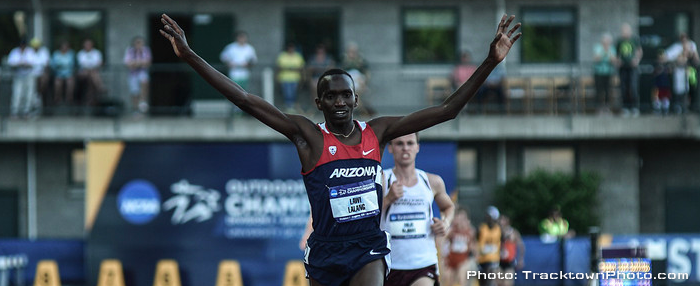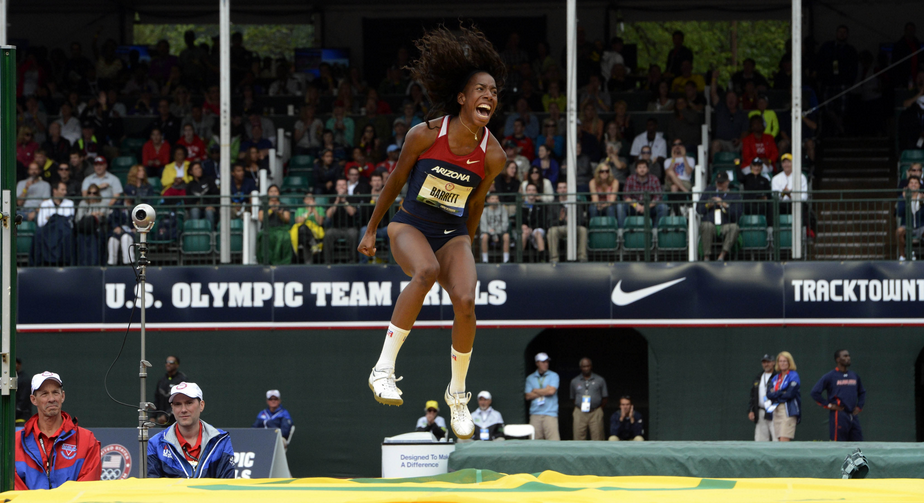The Madness of the NCAA Mile
“I can calculate the motion of heavenly bodies, but not the madness of people.”
—Sir Isaac Newton
After Isaac Newton lost a fortune in the South Sea Bubble in the early 1700s, he said, “I can calculate the motion of heavenly bodies but, not the madness of people.” Newton is referring to the irrationality of the stock market, but just as easily could be describing the typical championship mile race.
Often the mile turns into a tactical affair, with many runners running slowly in the pack, perhaps racing against their self-interest as they cater to the true kickers. The Enowitz Calculator understands this strategy and weights the speed of each miler more heavily than his strength to endure the rounds. With the race run at the high altitude of New Mexico, it is likely “sit and kick” will be the strategy of choice for many of the finalists. However, this may not be the case given that Lawi Lalang is in the field.
Lalang took the NCAA mile field by storm last year. He went out fast (1:59 through 809 meters) and finished faster (1:53 for the final ~800 meters). In fact, the top two 5k runners, Lalang (13:08 PR at the time) and Ryan Hill (13:27 PR at the time), turned out to be the class of the field when all was said and done, running 3:54.74 and 3:55.25 to finish 1-2 (both under the existing meet record). Lalang and Hill bested speedier milers and those doubling back from the DMR such as Austin Mudd, Robby Creese, Tyler Stutzman and Michael Atchoo. Even more surprising, was the collegiate record holder and defending champion, Chris O’Hare, finished way back in 7th.
The beauty (and frustration when trying to create a model) of the mile is that if they ran the race six different times, it is likely that there could be six different winners. If this were the case, predictions and models would be no more accurate than rolling the dice and the Enowitz Calculator would be northing more than an effort in futility. Nevertheless, we march forward.
A quick refresher on the Enowitz Calculator:
What we try to do:
Quantify the seemingly unquantifiable. For example, there are no formal statistics for being a good kicker or being a “big race” runner. However, we can create proxies for these variables using one’s finishing place at conference races, margin of victories / margin of losses, historical performances in championship races dating back to high school and a number of other variables.
What we do not try to do:
Predict which runners will make the finals. For example, the calculator may think a runner will perform well if he makes the final, but due to the different dynamics in the prelims, he may not even make the finals (prelims go out slower than finals and are different based on the fact that runners can qualify on time, thus giving 2nd heat runners an advantage). The calculator does takes into effect that fact that some runners in the final will likely be tired from the prelim rounds or from running the DMR / 3k the night before, but does not try to predict winners of these preliminary rounds.
In the theme of “Thinking, Fast and Slow” (or maybe “Running, Fast and Slow” by the dependable, but unheralded author who goes by 3X), I will make predictions based on well thought out analysis i.e. “The Enowitz Calculator” and then compare the predictions to my gut reaction picks i.e. “The Scout”.
[table “” not found /]-
Jeez, when will we learn. Lalang has tremendous aerobic power. The more things change, the more they remain the same. It was Arthur Lydiard’s contention that the runner with aerobic power will always be fresher late in the race than the speed-trained athlete. Cam Levins, anybody? Peter Snell?



















Comments